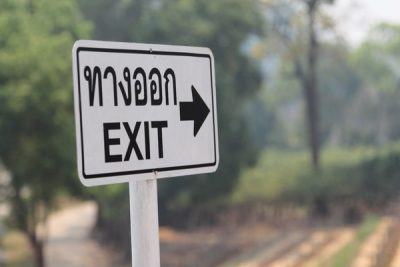
Thai is spoken or understood by nearly 75 million people, making it a significant Asian language that enjoys a well developed media, including translated work, dubbed movies, television, radio, music, books, instruction manuals, software and children’s’ material.
The language is part of the Thai-Kadai family, which covers languages spoken in a large swathe of central Southeast Asia, including the northern reaches of Burma, Laos and Vietnam, and parts of southern China. However, today only Lao is at all similar, the mother tongue for most Thais living in the Northeast (Isaan).
The Basics:
Despite the tongue Thai’d tonal complications, Thai isn’t that difficult to learn, with its simplified grammar and sentence structure. Here’s a five minute starter … more
Tones and Sounds:
There are five different tones, and several unusual sounds in Thai which make it quite different from Latin-based languages and so unfamilar for those from the West. See this short intro to tones, vowel sounds and basic rules … more
Grammar:
Thai grammar is quite simple, with only a few easy alterations to get used to that do not present much of a problem. We’ve covered the main differences and with sentence structure like English it’s easy to get going … more
Stringing Together Sentences:
Learn how to make a start with simple phrases and an insight into comments, questions and answers that a beginner would need to know when getting by in Thai … more
Visitors’ Vocabulary:
From ‘how much is this’ to ‘I love you’, we’ve provided you with just enough to get by, including a handy travellers’ print-friendly version for quick reference … more
Resources:
Useful books, CDRoms and websites for learning or improving Thai, plus recommended courses in Bangkok, Chiang Mai, Phuket and Samui. Find out where to study … more
More on learning Thai language
Within Thailand there are four recognised dialects including Northern, Northeast, Central and Southern, but as a result of the Ayuthaya domination in the 18th century, the Central dialect became widely used and is now taught in schools and used on television. Mostly there are vocabulary or pronunciation differences between the dialects.
The main characteristic of Thai language is its use of tones, which turn an otherwise small group of sounds into a large vocabulary. This can be the most challenging aspect for a foreign learner, but it isn’t dissimilar to the use of syllable emphasis in English – you simply have to get used to each different sound. On the other hand, its simplified grammar and basic word use make it easier to get started.
The Thai language also uses its own unique characters, with no spacing between words, making it difficult to read. But taking the time to memorise the characters greatly helps to decipher critical signs and open up the reading aspect of your learning. Although most Thais in tourist areas speak basic English, they greatly admire and appreciate those who’ve taken the trouble to learn even a few basic greetings.
